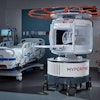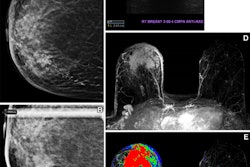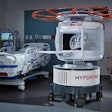
Black or Hispanic children are less likely than their white peers to be diagnosed with migraine via MR imaging when presenting to a pediatric emergency department (ED) for headache, according to a study published February 5 in Neurology.
A team led by MD/PhD candidate Danielle Kellier of the University of Pennsylvania in Philadelphia also found that these children receive less intensive treatment.
"Without a proper diagnosis, medications that can help reduce migraine may be delayed," said corresponding author Marissa Maliakal Anto, MD, also of the university, in a statement. "Unfortunately, our study found racial and ethnic disparities in the diagnosis, testing, and treatment of migraine."
Putting the best "migraine pathway treatment" into effect in the pediatric ED improves patient outcomes, but "without the correct initial diagnosis, patients may be exposed to unnecessary diagnostics and have delayed administration of appropriate therapies," the group noted.
Kellier and colleagues reviewed data from 160,466 ED visits for headache at 49 children's hospitals over a seven-year period (January 2016 to December 2022). Study participants were between the ages of 5 and 21. Of pediatric ED visits for headache, 25% were from Black children; 26% from Hispanic/Latino children; and 41% from white children.
| Comparison of headache diagnosis in pediatric ER by race | |||
|---|---|---|---|
| Factor | White patients | Hispanic patients | Black patients |
| Receipt of a migraine diagnosis | 46% | 28% | 28% |
| Receipt of an MRI exam | 9% | 4% | 4% |
The team also reported the following:
- Even after adjusting for factors such as age, sex, and insurance type, Black children were 44% less likely, and Hispanic children were 46% less likely to have an MRI than white children.
- Black children were 37% more likely and Hispanic children 54% more likely to receive only oral medications without any intravenous medications compared with white children.
- Black children were 20% less likely and Hispanic children 35% less likely to be admitted to a hospital than white children.
"Taken together, these findings suggest that a child's race or ethnicity may influence the evaluation, treatment, final diagnosis, and disposition of children with headache in the ED, such that [white] patients receive more intensive management," the group wrote, noting that "structural factors likely contribute to the disparities in pediatric headache," and that "institutional racism is a strongly established social determinant of child health that affects how patients from marginalized racial and ethnic groups seek, access, and receive care."
The study results underscore the need for more research regarding this particular healthcare discrepancy, according to Anto.
"Headache is one of the most common symptoms at children's hospital emergency departments," she said. "More research is needed to understand how disparities in migraine diagnosis, testing, and treatment affect children, teens, and young people in the long term [and] research is also needed to develop interventions to reduce these inequities."
The complete study can be found here.



.fFmgij6Hin.png?auto=compress%2Cformat&fit=crop&h=100&q=70&w=100)




.fFmgij6Hin.png?auto=compress%2Cformat&fit=crop&h=167&q=70&w=250)











